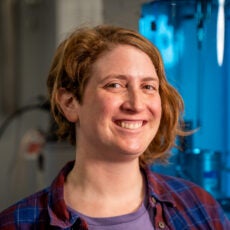
Grounding Carbon Management with Geoscientists
In carbon management work, geoscientists are a valuable addition to the team, providing the necessary technical expertise and hands-on experience to navigate the subterranean realms with confidence.
I am sitting at the inaugural Global Direct Air Capture Conference (GDACC23) in New York City. It has been two incredible days of nonstop networking and international intricacies. Dr. Edda Aradóttir, CEO of the legendary in-situ mineralization giant Carbfix, is answering Robinson Meyer’s query about what is the difference between European and American well permitting processes.
And that’s when it hits me. I glance around the room, wondering who outside of myself, if anyone, has ever actually submitted a well permit application. I have. True, the boreholes and groundwater access wells I have drilled aren’t the infamous Class VI beasts required for deep CO2 injection, but they are holes in the ground regardless. How many attendees could recognize the jackhammer-strength-hummingbird-trill drive of a Geoprobe, or differentiate drill rig makes on a freeway? Who has referenced a business-card-sized cheat sheet for subsurface marking colors? In fact, these participants never mentioned existing underground infrastructure.
For these and many more practical implementation reasons geologists need to be at the table in the nascent carbon management industry. If the STEM workforce is a braided river, then this pathway is a new channel being freshly cut in the silt. In order to allow for a healthy flow of talent to develop between academic and industrial geologists, in this new channel we must unblock current obstacles, deepen our connections, and keep the barriers to success as low as possible.
The current obstacles holding back geologists from being prolific in carbon management range from tangible to esoteric. Pragmatically, carbon management conference organizers could benefit from staff keeping a pulse on parallel opportunities like the Geological Association of America (GSA) and the American Geophysical Union (AGU) to ensure no double booking. Educational proliferation about this new field could be as simple as geoscience professors adding a unit on carbon management, perhaps excerpting Chapter 9, from Dr. Jennifer Wilcox’s excellent textbook. There are already great resources for how skills can transfer and what the role of geosciences in the energy transition looks like.
GDACC23 reached across the aisle by inviting representatives from Shell and Oxy, but we need to continue to involve traditional Oil & Gas (O&G) companies in these conversations. More precisely, we need to stop having parallel conversations in adjacent rooms and collectively navigate the transition together. In order to create a shared pool of knowledge and understanding there need to be opportunities for safe engagement between all parties.
One way to center these conversations is by finding common values and assessing decision-making around those shared values. Another way is to engage and employ people who are trained in conflict resolution, ombudsmanship, or even legal mediation. Or bring in someone like me, who just has an extremely high tolerance for awkwardness. There is common ground to be covered, and networks to be woven. These tapestries of connection cannot begin to be formed in isolated silos, we need to actually engage with each other.
Another uncomfortable impediment to talent flow that we need to talk about is money. Specifically, we need to talk about how going into oil, gas, and mining has provided (mostly) steady and hearty income across the industry and many people who enter the field want to do well for themselves and their families. Without competitive opportunities, carbon management simply isn’t attractive. As seen with the discrepancy between environmental consulting and petroleum geologists, the base pay for entry-level can differ by $30,000 a year. The easiest pivot point would be to divert talent within O&G and mining to lateral positions with a carbon management focus.
Geoscientists have the technical acumen and the experiential knowledge to navigate the subsurface with confidence. We are practically minded and implementation-focused, ready to join the cast of creative problem solvers who can make impossibilities a reality.
Estrella Beroff
Lab Manager, Clean Energy Conversions LabEstrella Beroff is the Lab Manager of the Clean Energy Conversions Lab. She specalizes in carbon mineralization, quantitative mineralogy, and laboratory management

